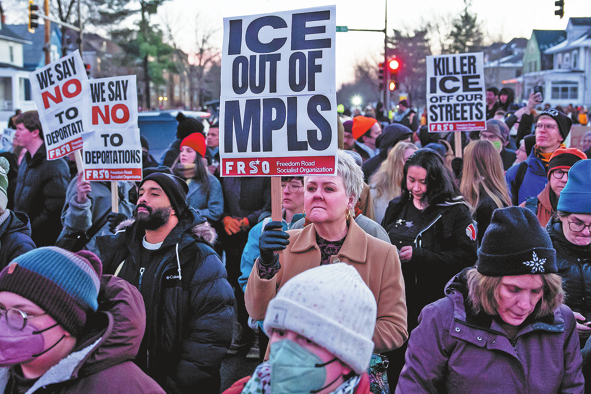Hardships drive more to food charities in US
By MINLU ZHANG in New York | China Daily | Updated: 2022-04-29 09:30

On a Thursday afternoon, Guadalupe took a 25-minute bus ride to get food from Mixteca, a nonprofit that helps Mexican and Latin American communities in New York's Sunset Park neighborhood. On the same day, she also had to work cleaning homes.
She used to pick up food from the Cristiana Luz del Mundo church near her home in the city's Brooklyn borough every week. The church stopped its food distribution in the fall of 2021, and since then, Guadalupe has had difficulty finding places near her home to get food.
"I feel bad. Not for myself, because I have lived my life already but because of my kids," Guadalupe, who has two children, aged 2 and 17, told Documented, a news site.
Food pantries across the United States are seeing a flood of new faces with the cost of groceries soaring amid the highest inflation in 41 years, and rising gas prices are causing more people to seek help.
A shortage of funds, volunteers and rising food prices have also caused some food pantries to cease operations across New York City, and the rising demand has put pressure on food pantries that remain open.
Chi Loek, executive director of UA3, a nonprofit organization that helps communities, told Documented that the demand for food bags "has increased by 10 percent in the last two months," growing from 2,000 to around 2,200 between January and March 2022.
"Inflation drives food prices up, and government regulations prevent many immigrants from getting government programs like Supplemental Nutrition Assistance Program, or SNAP, and other support and services. On top of that, many local pantries are shutting down," Loek said.
In Chicago, food pantries say they're seeing increased demand as inflation rises and people feeling the pinch on the price of everything from household goods to gas.
Diane Carioscio, the food pantry's director, told the Chicago Tribune that visits to the pantry started increasing toward the end of February, and the pantry is now serving about 25 percent more people than is typical.
Experts say that the end of some government aid programs that were available earlier in the COVID-19 pandemic is also driving more people to food pantries.
Sophie Milam, vice-president of public policy and advocacy for the Greater Chicago Food Depository, told the Chicago Tribune that she noted the monthly payments some families received as part of the expansion to the child tax credit ended last year.
Federal nutrition programs such as SNAP are adjusted for inflation only once a year, said Milam. That means people who are dealing with surging food prices now will not see their aid adjusted until October, she said.
Overall, the pantry Feeding Wisconsin saw just over 2,400 people visit for groceries in January. In February, that number climbed slightly to 2,430 but spiked to 3,200 in March, marking an increase of nearly one-third.
The sudden increase in food prices and the supply cut have also exacerbated the pressure faced by food pantries themselves.
"As supply chain challenges are disrupting grocers, there's not the excess food that there once was from grocers, retail and manufacturers," Stephanie Jung Dorfman, executive director of Feeding Wisconsin, told PBS Wisconsin.
























